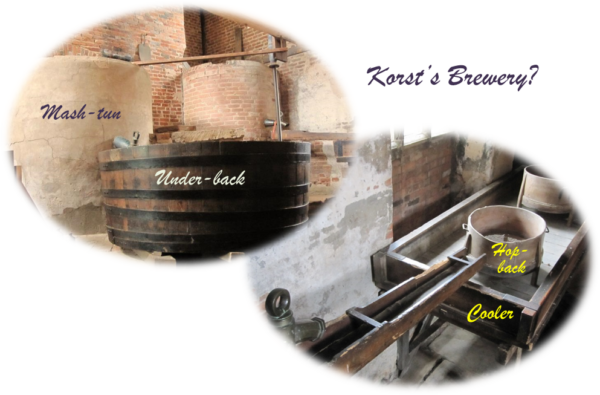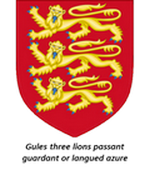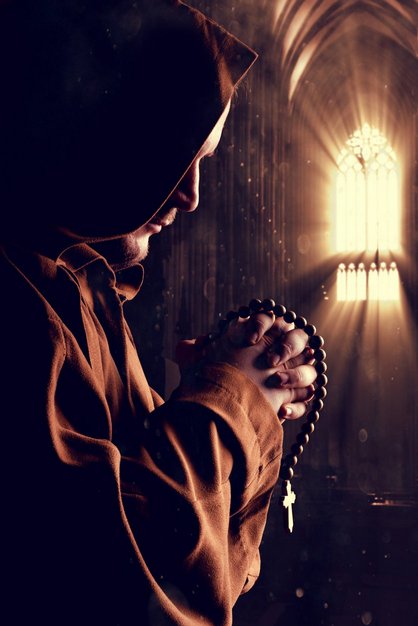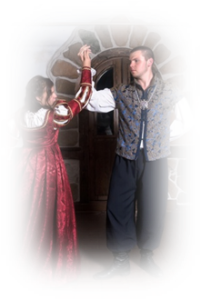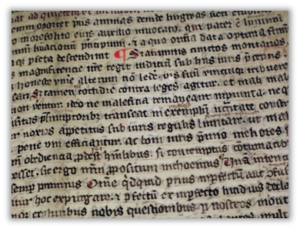There are numerous primary and secondary sources available online and in libraries that reveal details of life in the 14th century. It was a time of significant transitions, as the Middle Ages gave way to the emerging Renaissance. Here are just a few topics that are relevant to the stories of the Chronicles.
Brewing
|
Humans have been brewing beer and ale for millenia, often in small batches even in individual homes. By Alfred’s time, great castles, fortresses, or manor houses might very well have had a brew house on the premises to supply beer and ale for the residents. Read more … |
Encryption in Medieval Times
|
Most of us today think of encryption as a modern concept, dependent on powerful computers and complex mathematics to keep information safe from prying eyes. The notion of coded messages is, however, a far older idea.
One of the earliest recorded uses of encryption techniques is the Caesar Cipher, so named because of its use by Julius Caesar to send secret messages during his military campaigns. It is a simple alphabetic substitution cipher in which the receiver need only know the sender’s offset to decode the message. Julius Caesar was known to use an offset of 3, meaning that the letter “D” would be substituted for “A” in the coded message. One would use the same offset, or key, for the entire message. Read more … |
Heraldry
|
Google “heraldry” and you’ll find a wealth of information on the ancient practice of using devices and symbols to identify individuals, armies, groups, and families. Arms were emblazoned on banners and shields and were also often worn on tunics. In the chaos that medieval warfare could readily become, they provided easy visual recognition of friend or foe. For the losing side in a battle, however, display of arms could quickly become a liability. We’ve all read about important personages fleeing the battlefield and discarding their tunics – an attempt to reduce their chance of being recognized by their pursuers. Read more … |
Monastic Life
|
The rhythm of the monastic day and the lives of the monks are governed by the services associated with specific hours (the Divine Office). Though the Divine Office has evolved over the centuries, being now comprised of fewer services than in Alfred’s time, it still prescribes the the religious observances of the community. Read more … |
Medieval and Renaissance Dance
|
It is tempting to think of the Middle Ages and early Renaissance as a time of somber, sober living ruled by Church prohibitions on many types of behavior, including dance. A bit of research, however, reveals dancing was part of life for noble and commoner alike.
Court dances tended to be somewhat more stately and were often the way in which the nobility would process into the great hall for a banquet or other entertainment. The Pavane and the Almain (also known as the Black Alman, the Allemande, and several other names) are examples of court processional dances. The Saltarello was a bit livelier, with steps that involve small kicks. In all these dances, the couple stood side-by-side, their bodies distinctly separated, each with an arm outstretched to grasp the hand of the other. Read more … |
Paleography (medieval script)
|
Reading medieval and Renaissance documents can be challenging for the modern reader. Paleographers tell us that the written word developed slowly as a poor imitation of speech. Early writings would be sounded out by the reader, often aloud, to determine the words of a text.
Parchment, and later paper, were expensive, so writing was tightly compressed, often with very little space between words. Conventions were used such as well understood abbreviations (for example, .M. instead of writing out the word “Majesty”), superscript letters (“w” with a superscript “t” for “with”), the use of dashes or wavy lines to indicate omitted letters (such as “demād” for “demand”). Read more … |


